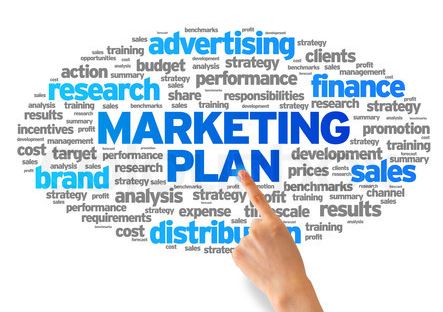Have you been considering an email marketing plan but just haven’t done it because it seems like too much work? Or do you think your efforts on social media can take its place? Well, it’s time to reconsider. Small business are increasing their use of email marketing— with 41% of small businesses using it to market to customers, a jump of nearly 25% in 12 months.
Small Business Marketing Plan

There are three reasons for this growth in email marketing. First, almost half (48%) of consumers say email is their preferred form of communication with brands. Secondly, email marketing continues to have one of the highest returns on investment (ROI). According to Marketing Sherpa’s “2013 Email Marketing Benchmark Report,” email marketers reported a 127% return on investment from email marketing. And third, it is one of the most measurable marketing tools available for small businesses.
A well crafted offer in your email campaign not only has a high ROI, but shoppers who come to a website via email marketing will spend more according a recent article from Magic dust, a company who specialize in web design in Sydney. In addition, email marketing is the second leading channel for customer acquisition growth, just behind organic search according to the acquisition channel growth chart.
Here are the top three reasons why email marketing should be your number one marketing strategy:
1. You Can Easily Measure Success
The only way to know if any marketing strategy is successful is to measure the results. And unlike social media strategies, your email marketing is easily measurable. Monitoring your unique open rate, bounce rate, click through rate, unsubscribe rate, and conversion rate can help to determine your email marketing success.

Those terms may sound daunting, but they aren’t. The unique open rate tells you what percentage of people who received an email actually opened it. Simple. (By the way, 47% of people say they open an email because of the subject line, so make your subject line a good one!) There is an easy formula to figure out open rates: Unique Open Rate = unique opens divided by the (number of total messages sent – messages bounced) x 100.
In order to find out the percentage of people who actually received your email you have to subtract the number of bounced or non-delivered emails from your entire list and then divide that number into the number of emails opened. If you have a bounce or non-deliverable rate of more than 1 percent it may indicate that your list needs to be cleaned or updated. Clean lists are critical to deliverability.
However, opened emails only show an initial level of interest- you want people to click through to your site and engage with your message. This is called the Open to Click Rate: Open to Click Rate = Total number of clicks divided by the number of tracked mail opens x 100.
Once you know how many people are clicking on your call to action, there are several ways to measure your campaign conversion rates. This shows how many people take the specific actions that you wanted them to take.
These may be actions such as downloading information, completing forms, requesting quotes, and making purchases. Often, methods for tracking conversion include building unique landing pages, implementing call tracking, adding printable coupons, or more specific calls to action and integrating those efforts with your website analytics. Yes, this requires some effort, but it’s well worth it to know how successful your emails are.
2. People Check Email on Mobile Devices

More than 50 percent of mobile phone users are reading email on their phones. This provides you with a great opportunity to ensure your customers see your messages. It’s called push marketing- when users are alerted to a new email they will automatically see the subject line and a few lines of copy pop up. This ‘push tactic’ is a more effective way to reach visitors than passively hoping they’ll come to your website or Facebook page. Of course, this puts even more importance on the subject, email copy, value statements, and calls to action of any email effort.
3. You Can Send Out Relevant Content to Meet Customer Needs
Clearly, you make an impression with content that is relevant to the customer’s needs. Email allows personalization on a level that can truly create intimate relationships with your customers. Using the data you have on your customers, you can personalize offers and trigger campaigns based on a specific user’s behavior. After all, the goal is to have users eagerly open your emails, and then click through to the offer.

Personalization is how you make that happen. Personalized messages have higher than average open and click rates, according to the 2013 “Email Marketing Metrics Report”. The below graph demonstrates the impact that personalization has on the success of an email marketing activity:
| B2B Email Impact of Personalization on Open and Click Rates | ||
| Open Rates | Click Rates | |
| No personalization | 9.8% | 2% |
| Subject line only | 12.9% | 2.1% |
| Message only | 13.2% | 2.4% |
| Subject line and message | 5.3% | 2.8% |
The increases in open and click rates may not seem impressive, but they dramatically impact ROI. When you deliver the right message tailored to the recipient, your open and read rates improve.
Technology has made customer acquisition and retention easier in so many ways—email delivery tools help you reach your customers with information and offers that they want to get from you. So if your small business isn’t utilizing this tool, now is the time to rethink that judgment call.
Join 25,000+ smart readers—don’t miss out!







